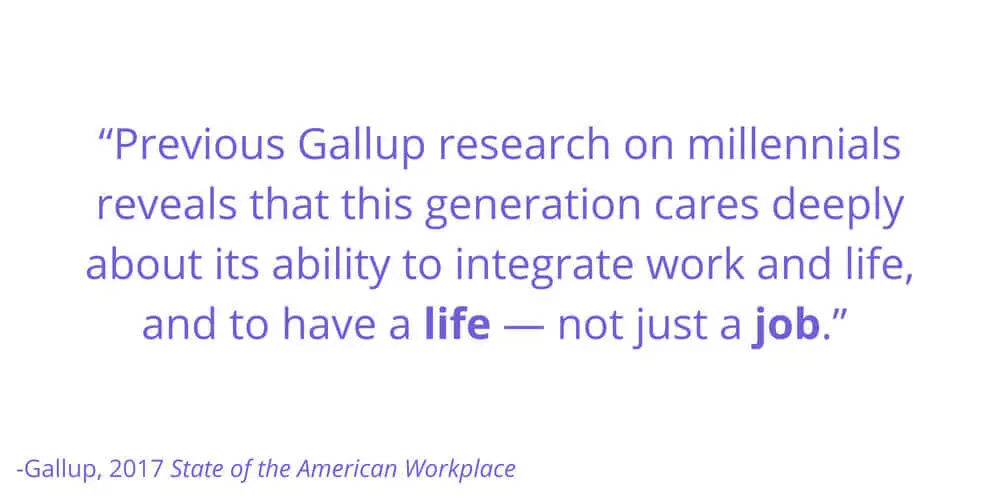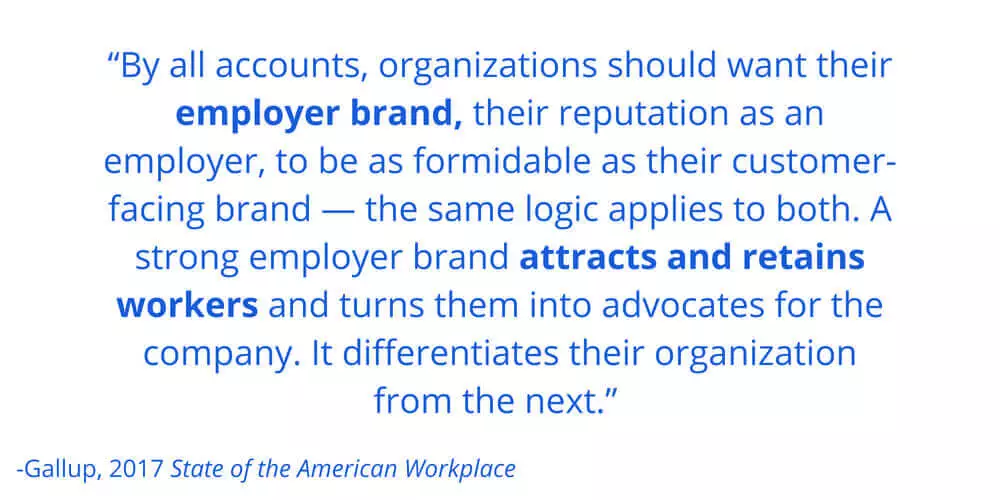Your HR department worked hard to craft the ideal recruiting, onboarding, and employee training model. They built an appealing benefits package and offer competitive salaries.
Yet your retention rate isn’t improving. The work environment is tense, and despite your best efforts, your workforce is showing signs of disengagement and demoralization. Productivity is dropping.
You’ve tried everything you could think of to improve the employee experience, but a major obstacle is preventing your initiatives from gaining traction: employee frustration.
Employee frustration is threatening your business. Discover the solution.
It’s time to pay attention to the employee experience
While companies have long prioritized the customer experience in the business strategy, the employee experience has only recently started receiving its fair share of attention.

The employee experience is the sum of all of the interactions your employees have at work. It is not the perks, money, or free food — it’s much larger than that. From the recruiting process through the end of their tenure, the employee experience is determined by how workers perceive everything that happens on the job.
The digital age introduces new employee experience challenges
It may seem straightforward, but the ideal employee experience continues to evade many companies. In the digital era, providing a positive experience is even more difficult.
Advanced digital tools like data and analytics, machine learning, artificial intelligence, and automation have the potential to boost employee productivity and efficiency by leaps and bounds. But too often, complexity and poor usability make them a hindrance, not a help.
Contrary to its purpose, technology has become major contributor of employee frustration.
Employee frustration is plaguing business
Employee frustration is a negative emotional state that occurs when adverse aspects of the work environment outweigh the positive. In addition to technology, factors stemming from workflow, culture, and management can contribute to employee frustration.

For example,
The employee who has to use new enterprise software without adequate training and resources will be frustrated by complexity and lowered productivity.
A detached, stagnant culture will breed frustration among those who want to grow and innovate.
An overworked employee who’s lost his or her personal life will become frustrated with the lack of work-life balance.
An employee whose manager only checks in during the quarterly performance review will get frustrated with the lack of coaching and development.
Regardless of its source, employee frustration ultimately leads to dissatisfaction, disengagement, reduced productivity, and increased turnover.
Scenarios such as these are too common. To fix the problem, companies must take a holistic approach. They need a structure that not only promotes a positive employee experience, but prevents the negative factors that lead to employee frustration.
Business executives want to fix the employee experience
Company leaders and HR chiefs recognize the importance of a strong employee experience to retention and overall business performance.
According to Deloitte, nearly 80% of executives rated the employee experience as “very important” or “important.” However, just 22% said they believe their companies are excellent at providing a competitive employee experience.
The time to address the issue is now.
But before we dig into this further, it’s critical to understand that a positive employee experience and employee frustration are mutually exclusive. Your company cannot improve the experience of its workers without first identifying and remedying the causes of frustration.
A how-to for overcoming employee frustration
Here, we will break down what’s causing employee frustration, how technology introduces new challenges, and finally, what employers can do to improve the employee experience.
Inadequate software training
Digital has irrevocably transformed the employee experience. But as technology becomes more ingrained in the modern workplace, new challenges, and therefore new sources of frustration, have arisen.

One of the biggest points of frustration comes from usability. Software implementations are already stressful because they require employees to spend time and energy learning to use a new system. Meanwhile, employees still need to complete their tasks.
When workers feel like their ability to perform at their highest ability is threatened, they often become frustrated.
Addressing the software learning challenge comes down to improving training.
Traditional methods of training, such as a classroom, webinar, or instruction manuals, are ineffective for contemporary enterprise software.
First, they are time consuming and often include way too much information. Then, when it’s time to actually use the tool, employees can’t remember what to do.
This frustration is intensified by the need to relearn following upgrades and updates. Because many enterprise software are cloud-based, updates are installed automatically. Occasionally, this means an employee will log on to see a new interface, different menu, new functions, and advanced features.
Like what you’re reading? Subscribe to the blog for fresh insights delivered right to your inbox!
The solution is changing your approach to training
Remember: You made that technology investment to help your employees work smarter. You gave them the tools, now make sure they have the know-how to use them.
With contextual learning, any software is instantly simplified. No more wasting time sitting through classroom training sessions or webinars, no more dense training manuals.
Contextual guidance is the most effective training solution. Tools equipped with contextual guidance, such as a Digital Adoption Platform, sit on top of any software and provide real-time guidance and support so users can perform tasks on a platform without needing to stop and figure out how to do something. It’s the only training and navigational system that is built to support advanced, evolving technology.

Taking this approach to training and support not only enables you to achieve a high ROI on your technology investment, it nips tech-related employee frustration in the bud and helps protect the employee experience.
Misalignment between management and employee goals
Employees want certain things out of their jobs. They get frustrated when these desires are not fulfilled.
There are five main attributes employees want from their companies, according to Gallup’s latest State of the American Workplace, which based its findings on data from more than 31 million respondents.
- The ability to do what they do best
- Greater work-life balance and better personal well-being
- Greater stability and job security
- A significant increase in income
- The opportunity to work for a company with a great brand or reputation
Employers are challenged to keep up with evolving employee demands and expectations as younger generations account for an increasing proportion of the workforce.
According to Pew Research Center, millennials now comprise 35% of the American workers, making them the largest generation in the U.S. workforce.
Compared to gen-Xers and baby boomers, millennials tend to place higher value on attributes like flexibility and work-life balance. According to Gallup, flexible scheduling and the ability to work from home plays a key role in an employee’s decision to stay with a job.

Millennials have also expressed a stronger desire for professional development than their older counterparts. According to Gallup, millennials are more likely than gen-Xers and baby boomers to say that a job that accelerates career development is “very important” to them (45% of millennials vs. 31% of gen-Xers and 18% of baby boomers).
However, disengagement is rampant among the American workforce.
Gallup found 51% of employees are not engaged, and haven’t been for some time. Just 33% of employees said they were engaged, enthusiastic, and committed to their work and employer.
These bleak numbers are a clear indicator that employees are frustrated. However, there are steps companies can take to alleviate this frustration and improve the employee experience.
Let go of outdated policies and provide better career development opportunities
Employers have to evolve with the changing demographics and demands of their workforce. The structures and policies that have long-guided the way people work are losing relevance in the contemporary labor force.
Today, mobile technology and digital communication platforms make it possible for employees to work remotely and even on different schedules. Companies that accommodate employees’ desires for greater flexibility will appear more modern and in tune with millennials’ lifestyles.

To remedy frustration about slow career growth, offer formal and informal professional development opportunities. This can take the form as a senior mentor within the company, budget for learning resources or courses, or the chance to try something new. Provide consistent and frequent feedback, not just a traditional performance review.
If an employee feels stunted in your organization, it won’t be long before they find somewhere else to grow.
Inadequate support during change
Technology is accelerating the pace of change in all industries and markets. This means companies need to have a strategic and effective change management infrastructure to ensure employees receive enough support during transformation.
During change, employee buy-in is critical. Effective communication is integral to getting employees on board. Leadership must be transparent about why the change is needed, what the desired outcome will be, how the change will be enacted, and how employees will be affected.
Without addressing these questions, employee uncertainty will turn into stress and frustration, which will manifest in resistance.
According to McKinsey, 70% of change management efforts fail as a result of employee resistance and lack of management support.

Address the psychology of change management
By understanding the psychology of change, senior executives, managers, and change leaders can work together to alleviate frustration, reduce employee resistance, and promote buy-in.
Research shows that an “Influence Model” is an effective approach to driving change.
This human-centered model includes:
- Access to strong role models: Whether consciously or subconsciously, employees will mimic the behavior of positive roles models
- True understanding of the change: Understanding the “why” behind a change will make employees more comfortable with what’s coming
- Talent development opportunities: If you give employees the opportunity to expand their skills, you will not only equip them to handle change, you can improve business performance.
- Formal reinforcement mechanisms: Employees will associate behaviors that promote the desired change with positive reinforcements, such as rewards or positive feedback.
Rebuild your employee experience and prevent frustration
Targeting employee frustration is tricky since it can come from any aspect of work. But doing so is critical to improving the employee experience.
HR leaders and executives must give the employe experience a larger role in the overall strategy.

Unfortunately, organizations usually don’t invest as much into their internal brand as their external one. But if they want to improve retention, productivity, and performance, they have to start.
Pay attention to “micro-moments”
After addressing the structural issues that lead to employee frustration, take a step back and look at the way people in the organization treat each other. Interactions with colleagues, mentors, and managers have an outsized effect on the overall work environment.
By paying attention to “micro-moments,” or everyday experiences, it’s possible to identify where negative energy and frustration may be coming from.
At the end of the day, companies are made up of human beings. But too often, important traits like compassion and kindness get pushed to the wayside in favor of characteristics such as competition and drive. While these are important for developing a high-performance culture, we need those humanistic traits to balance them out. Otherwise, you will end up with high levels of employee stress and all of its negative effects.

